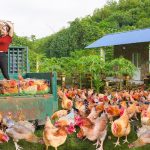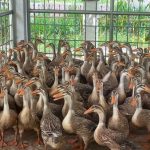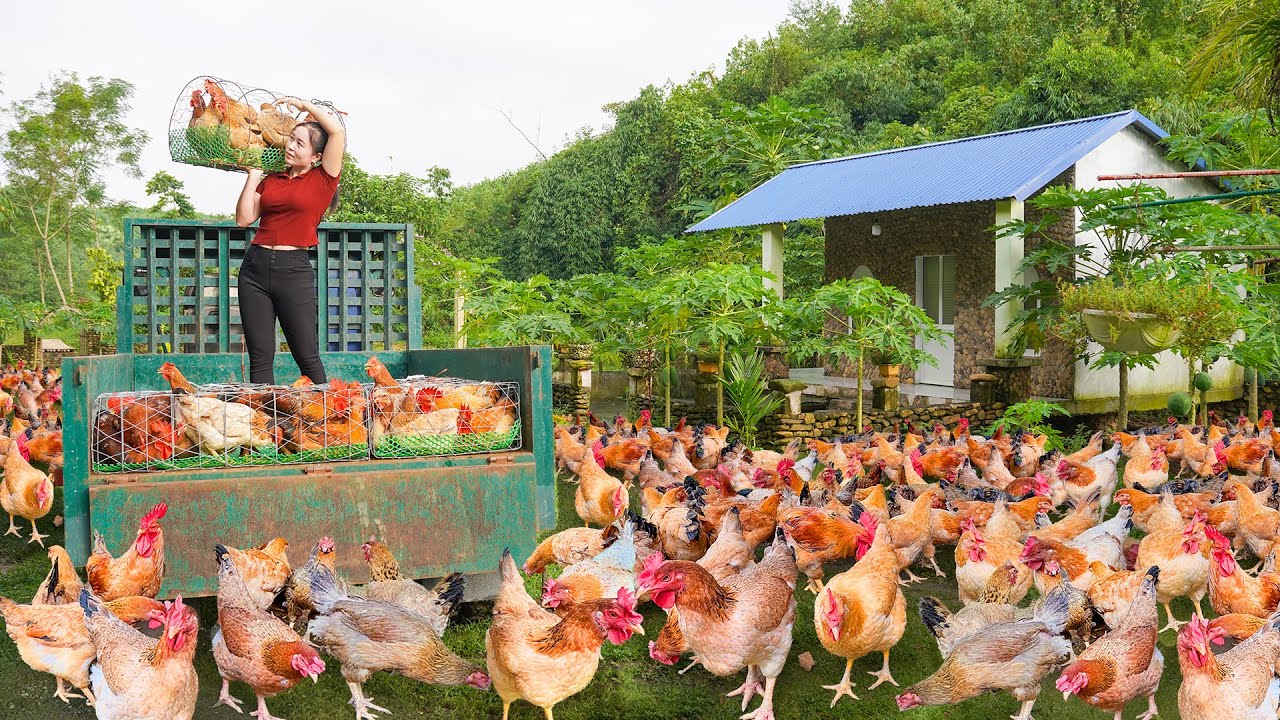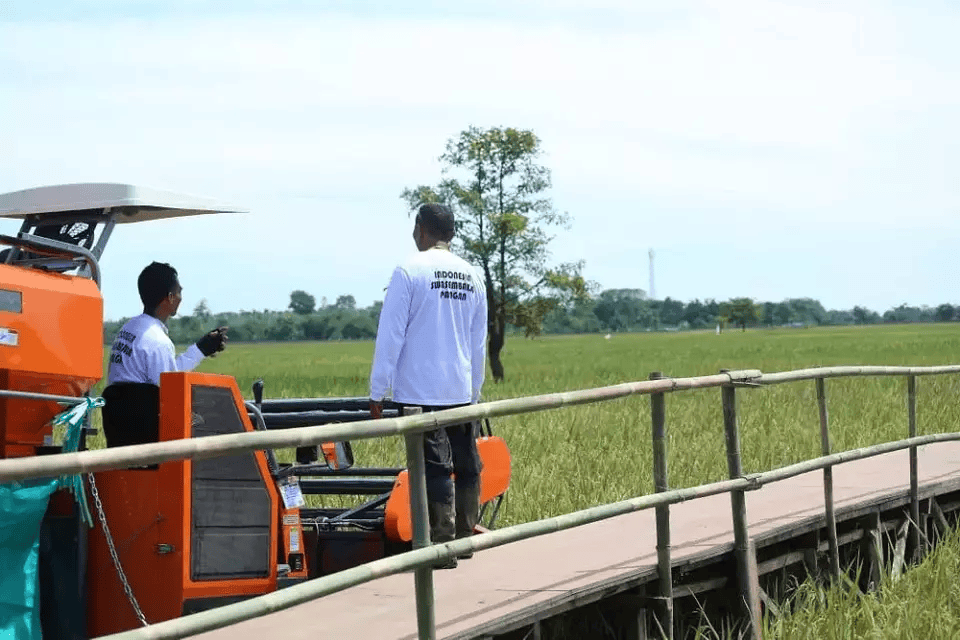Snail Farming for Supplying High Quality Escargot to Restaurants and Export Markets
Introduction to Heliciculture and Gourmet Snail Production
Snail farming or heliciculture has emerged as a lucrative niche in sustainable agribusiness offering high profit margins and novel gastronomic appeal. Gourmet escargot features prominently on fine dining menus and in upscale bistros seeking unique ingredients that evoke Old World charm. Visionary entrepreneurs convert modest plots or purpose built snailries into prolific escargot factories by harnessing the reproductive fecundity and resilient biology of select species. For the connoisseur and health aware alike escargot provides delicate umami, omega fatty acids, and low caloric content while satisfying culinary curiosity. The path from humble slime trail to plated delicacy demands scientific precision, unwavering hygiene, and artful marketing.
Market Prospects for Escargot Supplies
Worldwide demand for premium escargot has risen steadily as restaurateurs seek to diversify offerings and export markets awaken to exotic protein sources. In France and parts of Europe escargot consumption remains entrenched yet competition has driven quality expectations skyward. Chefs prize uniform shell diameter, clean meat free of grit, and consistent texture. In North America Japan and Middle East demand for frozen or brined snail meat has expanded for gala events and fusion cuisine. Exporters who demonstrate food safety certification and traceable supply chains command price premiums. Building strategic alliances with distributors, attending international gastronomy fairs, and securing endorsements from culinary influencers unlock lucrative contracts.
Selecting Optimal Snail Species for Farming
Helix aspersa maxima – The French Burgundy Type
Helix aspersa maxima, colloquially Gros Gris, combines robust growth with culinary sophistication. Adults reach 30–35 g in 8–10 months under 18–22 °C regimes. Their marble-banded shells are not merely aesthetic; thickness correlates with meat juiciness. In ventilated polythene shelters, maintain 80–85 percent relative humidity via diurnal misting. Stock at 150–200 snails/m² to optimize ground cover without impeding locomotion. Feed conversion ratios average 3 kg feed per kg weight gain when using a 70 percent leafy greens and 30 percent formulated pellet mix fortified with calcium lactate. Vigilance for shell erosion—evidenced by pitting—signals mineral deficits; correct with ground oyster shell spread at 50 g/m² weekly. Disease resistance is high, though occasional mucor fungal outbreaks demand prompt substrate replacement and UV-sterilized irrigation water.
Helix pomatia – The Roman Snail
Helix pomatia matures more slowly—12–14 months to 40 g—but commands premium margins in haute cuisine. Its flesh delivers nuanced minerality and firm texture prized by Michelin-starred chefs. Optimal rearing occurs at 16–20 °C with winter dormancy induced by gradual temperature reduction to 10–12 °C over four weeks; snails remain under ventilated straw bedding to prevent desiccation. Stocking density is lower (80–100/m²) to reduce competitive stress. During active growth, supplement natural forage (dandelion, clover) with a high-protein pellet (32 percent crude protein) and 15 percent limestone grit. Due to legal protections on wild stocks, farm-bred H. pomatia must be registered with local wildlife authorities; meticulous record-keeping grants traceable provenance, a key export credential.
Achatina fulica – The Giant African Snail
Achatina fulica offers explosive expansion: juveniles grow from 5 g to 50 g in 6–8 months when maintained at 24–28 °C and 85–90 percent humidity. However, its invasive potential necessitates airtight concrete pens with subterranean wire barriers (mesh < 1 mm) to forestall burrowing escape. Optimal substrate is a 2 cm layer of peat-rich loam over sand for drainage; replace every 6 weeks to prevent helminth buildup. Feed a composite of hibiscus leaves, melon pulp, and a 40 percent maize meal blend; include vitamin D₃ at 200 IU/kg to enhance shell pigmentation. Rapid fecundity—200+ eggs per clutch—requires separation of juveniles by weight class to minimize cannibalism. Biosecurity mandates double-door entry systems and footbaths with 1 percent calcium hypochlorite solution.
Archachatina marginata – The West African Giant
Archachatina marginata matures to 45–55 g in 10–12 months and boasts a high meat-to-shell ratio (~0.65). Its deep-brown, glossy shell is a visual hallmark, fetching artisanal market premiums. Rearing at 22–26 °C with shaded polycarbonate roofing prevents photodegradation of shell pigments. Use a substrate mix of coconut coir and forest humus (1 : 1) enriched with 5 percent biochar. Calcium supplementation via powdered limestone at 30 g/m² fortnightly maintains shell integrity. Stock at 100/m², rotating pens every 8 weeks onto fallow beds to break pathogen cycles.
Selection Criteria and Genetic Stock
• Allometric growth patterns – Select lines where shell diameter and foot mass increase in proportion, ensuring consistent portion sizes.
• Fecundity indices – Prioritize snails averaging > 80 viable eggs per clutch across at least three breeding cycles.
• Meat yield ratio – Track meat-to-shell weight, aiming for ≥ 0.60 to maximize product return.
• Disease resilience – Choose pedigrees that weather low-level pathogen exposures without growth setbacks.
• Heritable shell coloration – For species like A. marginata, a stable dark-hued shell commands gourmet attention.
Procure from certified hatcheries offering DNA-verified parentage and xenobiotic-free assurances. Implement pedigree registries and assign unique ear-tags or RFID chips to founder stock for lineage tracing.
Geoclimatic and Biosecurity Considerations
Match species to your locale’s thermal profile: H. aspersa maxima for temperate zones, A. fulica for subtropical operations. Conduct pest-risk analyses per ISPM 15 guidelines before import. Quarantine new cohorts for 30 days under sentinel observation, employing fortnightly swabs for nematode and fungal screening. Maintain digital logbooks with geo-tagged pen locations, microclimate readings, and veterinary interventions to satisfy both food-safety auditors and export regulators.
Designing Snailery Infrastructure and Environment
Enclosure Systems and Flooring
Construct snail pens as modular units, each 5 m² to facilitate rotation and cleaning. Walls should be at least 40 cm high, made of smooth, UV-stabilized HDPE panels or rot-resistant cedar, to eliminate footholds. Bury a galvanized wire mesh barrier (1 mm aperture) 10 cm deep around the entire perimeter to thwart burrowing. For flooring, layer 5 cm of sterilized loam soil blended with 20 percent peat moss, 10 percent fine sand, and 5 percent crumbed coconut coir—this mix retains moisture while allowing drainage. Underneath, install a 2 cm gravel sub-base topped with geotextile to prevent compaction and waterlogging. Slope the floor at 1 percent toward a central drainage channel lined with stainless-steel grating so excess water can be evacuated without disturbing substrate.
Incorporate removable flooring panels every 1 m for spot sanitization: lift, disinfect the underside with food-grade hydrogen peroxide, and replace within 15 minutes to minimize disruption. Between pens, maintain 30 cm-wide walkways surfaced with stone dust for easy cleaning and worker safety.
Climate and Humidity Control
Deploy a network of digital thermo-hygrometers in each pen quadrant to log temperature and relative humidity (RH) every 10 minutes. Ideal daytime temperatures range from 18–24 °C; deploy low-velocity ceiling fans to prevent heat pockets, activated automatically when any sensor reads above 25 °C. Use misting nozzles positioned 1.2 m above the floor on a 15 × 15 cm grid, set to deliver microdroplets (< 50 μm) for even moisture distribution. Schedule misting cycles every 30 minutes for 60 seconds when RH dips below 75 percent, and suspend when RH exceeds 85 percent.
At night, prevent dormancy by maintaining a floor-level temperature no lower than 15 °C. Integrate under-floor heat mats that engage when bottom-layer temps fall below 16 °C. All heating and misting controls should tie into a programmable logic controller (PLC) with remote monitoring capability and SMS alerts for excursions beyond set thresholds.
Shelter and Shade Structures
Provide a network of low-arching shelters fabricated from UV-filtered fiberglass mesh (40 percent light diffusion) suspended on anodized aluminum frames. Position shelters evenly at 5 m intervals to create shaded microhabitats. Beneath each shelter, place 10 cm-deep mulch rings composed of clean straw or shredded bark to mimic natural refugia, reducing desiccation risk. For dynamic shading, install retractable shade cloths (50 percent opacity) on manual winches—engage during midday to prevent thermal stress and retract under cloudy conditions to maximize photosynthesis of any live forage within pens.
To encourage natural behavior, include stone and tile “resting platforms” rising 5–10 cm above substrate; these serve as humidity refuges during heavy misting and aid in shell strength maintenance. Rotate platform positions monthly to discourage pathogen hotspots.
Feed and Nutrition Protocols
Natural Diet Components
Implement a weekly rotation of forages to supply a spectrum of micronutrients. One day supply 200 g/m² of chicory and dandelion leaves (rich in calcium and inulin), the next day kale and spinach for vitamin K and iron. Introduce fruit pulp—watermelon, cantaloupe, cucumber—at 50 g per 100 snails twice weekly to provide hydration and simple sugars. Supplement every third week with aquatic plants such as duckweed (Lemna minor) harvested from closed-loop aquaponic tanks to deliver essential amino acids and trace minerals.
Ensure calcium intake by broadcasting 30 g/m² of finely crushed oyster shell and 20 g/m² of powdered limestone weekly. To prevent nutritional monotony and wastage, employ feed-trays elevated on 2 cm pegs above the substrate; this prevents snails burying the ration and reduces spoilage.
Formulated Feed Mixes
Use a custom pelleted ration composed of 25 percent soybean meal, 20 percent fishmeal (rich in lysine), 30 percent wheat bran, 15 percent dehydrated alfalfa, and 10 percent corn gluten. Incorporate a micro-premix with:
-
50 ppm zinc sulfate
-
40 ppm manganese oxide
-
10 ppm copper sulfate
-
200 IU/kg vitamin D₃
-
500 ppm inactivated Saccharomyces cerevisiae as a probiotic
Pellet size should average 2–3 mm diameter. Feed at 5 percent of total snail biomass per day, delivered in two equal rations at dawn and dusk to match peak feeding times. Weigh and record feed offered versus feed residue daily to calculate Feed Conversion Ratio (FCR), targeting an FCR below 3.0.
Every four weeks, conduct a digestibility trial by collecting fecal samples over 48 hours from a 1 m² sub-pen; analyze for ash and crude fiber to adjust pellet fiber content (ideal 8–10 percent) and optimize nutrient uptake. Sterilize feed pellets via gamma or UV treatment prior to distribution to eliminate mycotoxin risks.
Breeding and Reproduction Management
Photothermal Induction and Hormonal Cues
To maximize synchronous spawning, simulate seasonal cues: extend daily light exposure to 14–16 hours using full-spectrum LED fixtures at 150 µmol·m⁻²·s⁻¹, then reduce gradually during off-season to 10–12 hours. Combine with diurnal temperature cycling—maintain 22–24 °C by day, drop to 18–20 °C at night. This photothermal regimen elevates endogenous serotonin levels, triggering reciprocal mating behaviors within 5–7 days.
Size-Matched Pairing and Broodstock Rotation
Ensure broodstock homogeneity by sorting snails into 5-gram weight classes (±10 %). Pair individuals of identical size and shell diameter (±1 mm) to equalize gamete output. Rotate breeding pairs every three cycles (approx. 9 weeks) to reduce inbreeding depression. Maintain a pedigree register—assign unique alphanumeric IDs to each snail and log parentage, clutch dates, and hatch rates in a relational database.
Controlled Copulation Chambers
For high-value lines, use 20 × 20 × 10 cm polypropylene mating chambers with removable perforated lids. Place two size-matched snails inside for 24 hours; monitor under 5× magnification for successful copulation (visible spermatophore transfer). After mating, return snails to their home pens and tag them with waterproof shell paint dots indicating mating date and cohort.
Advanced Egg Collection and Incubation
Once oviposition occurs (eggs embedded 4–6 cm into substrate), extract clutches with a sterile spatula, preserving the surrounding vermiculite. Transfer to 10 cm-deep incubation trays containing 1:1 moistened vermiculite:garden peat; tray depth ensures eggs maintain shape without compaction. Stack trays in climate-controlled cabinets set at 22 °C, 90 % RH, with 0.2 L·s⁻¹ active ventilation to prevent CO₂ accumulation. Rotate trays bi-daily to even out microenvironment variations. Expect hatching at 14–19 days; record emergence counts to calculate hatch rate percentages.
Graded Nursery Systems
Upon emergence, classify juveniles by shell height:
-
Class A (3–5 mm): relocate to fine-grained sand-peat mix (1:1) in 0.5 m² nursery trays.
-
Class B (5–10 mm): move to intermediate pens with coarser loam substrate.
Feed hatchlings a 50:50 mash of alfalfa meal and brewer’s yeast at 3 % body weight daily, divided into three meals. Monitor daily growth, weighing 20 sample juveniles per cohort to chart growth curves. At 4 weeks or 5 g, transition all juveniles to standard grow-out pens.
Record-Keeping and Genetic Improvement
Implement a digital breeding log that tracks: parental IDs, clutch size, hatch rate, juvenile survival, and F₁ growth performance. Quarterly, analyze data to calculate heritability estimates for growth rate and shell thickness using standard quantitative genetics methods (e.g., parent–offspring regression). Cull lines with below-threshold performance (<70 % hatch, <0.6 meat-shell ratio) and introduce fresh genetic stock to maintain vigor.
Health Monitoring and Biosecurity Measures
Comprehensive Pathogen Surveillance
Every two weeks, collect swab samples from substrate, feed trays, and snail integument. Send to a veterinary mycology/parasitology lab for culture on Sabouraud agar and nitrate reduction tests. Track the incidence of common pathogens:
-
Nematodes (Phasmarhabditis meridionalis): treat with soil drench of 0.5 % bergamot oil solution.
-
Mucor spp. and Mucilago spp.: combat with localized substrate replacement followed by 30 J·cm⁻² UV-C irradiation.
Maintain an on-site microscope for daily visual checks of 10 randomly selected snails per pen; record any signs of abnormal mucous secretion, shell lesions, or lethargy.
Vector Exclusion and Physical Barriers
Encircle each pen with a 15 cm-wide band of food-grade diatomaceous earth renewed weekly to immobilize invading gastropods and insect vectors. Install insect-proof doorways with overhangs and brush seals. At all entry points, provide dual-footbath stations: first containing 2 % sodium percarbonate, second with 1 % quaternary ammonium disinfectant. All personnel must pass through both before entering quarantine or production areas.
Quarantine and Acclimation Protocols
New stock enters a dedicated quarantine block of 3 m² pens isolated by 2 m buffer zones. Over 30 days, observe for behavioral anomalies and perform bi-daily health checks. Employ ELISA kits to test for Salmonella spp. in snail mucus. Only after three consecutive negative tests and stable feed conversion ratios (<3.5 FCR) may new stock join the main population.
Prophylactic and Therapeutic Interventions
Incorporate prophylactic probiotics in feed—Bacillus subtilis (1 × 10⁹ CFU/kg) and Lactobacillus plantarum (5 × 10⁸ CFU/kg)—to maintain gut eubiosis and outcompete pathogens. At first sign of systemic infection (extended retraction, hemolymph oozing), segregate affected snails and administer topical application of 0.1 % chlorhexidine gluconate. Dispose of severely infected individuals by deep-burial according to local biohazard ordinances.
Environmental Sanitation and SOPs
Daily, follow a standard operating procedure for pen cleaning: remove snails to holding trays, scoop out top 2 cm of substrate, spray pen interiors and floors with 1 % hydrogen peroxide, let dwell for 10 minutes, then rinse with sterile water. Rotate pens offline for 48 hours before reintroducing snails. Document each cleaning event with timestamped photos and operator initials in a shared digital logbook.
Emergency Response and Traceback
Develop an outbreak action plan: identify the index pen, isolate it, intensify surveillance radius to adjacent pens (2 m), and halt all movement of snails, substrate, and feed. Engage third-party auditors if off-farm transmission is suspected. Maintain full traceability from breeder to final delivery—barcode every shipment—to enable rapid recall and safeguard brand reputation.
Harvesting Processing and Purging Methods
Fasting and Purging extended
Initiate a 5-day fasting regimen in a dedicated purge zone: cease all feed but maintain free access to potable, aerated water. Use raised drip-free troughs to prevent substrate contamination. During this interval snails will regurgitate ingested matter, emptying their digestive tracts and reducing off-flavors. Monitor snail weight loss daily—expect a 5–7 percent reduction, which is acceptable without compromising yield. Place hygrometers at 5 cm height to ensure relative humidity remains at 80–85 percent; if RH dips, activate misting nozzles for 45 seconds every hour.
Blanching and Shell Cleaning in detail
After fasting, transfer snails to sanitized perforated baskets. Immerse in water heated precisely to 80 °C for exactly 30 seconds—this causes rapid foot retraction into the shell and denatures surface mucoproteins, loosening slime. Immediately plunge baskets into an ice-water bath (4 °C) for 20 seconds to halt cooking and facilitate handling. Scrub shells under running potable water using soft-bristle brushes; incorporate a food-grade dilute citric acid rinse (1 percent solution) to dissolve residual calcium deposits and inhibit biofilm formation. Allow shells to air-dry on stainless-steel racks inside a laminar-flow cabinet to maintain sterility.
Meat Extraction and Gourmet Cooking
Using spiral-tipped extraction picks, draw out the entire snail “foot” in one motion to preserve muscle integrity. Manually trim away digestive gland and esophageal tissues, retaining only the foot and mantle skirt. Rinse meat in a 0.5 percent brine solution infused with thyme sprigs for 2 minutes, then pat dry.
For sous-vide preparation, vacuum-seal 10 g portions of raw meat with:
-
1 g unsalted butter
-
0.5 g minced garlic
-
0.2 g fresh parsley
-
A single bay leaf fragment
Cook at 85 °C for 20 minutes; internal temperature should reach 74 °C. Rapidly chill to 4 °C in a blast-chiller (90 percent reduction in 45 seconds) to lock in juices and prevent bacterial growth. Store sealed pouches at –18 °C; label with batch code, cook date, and use-by date (12 months).
Quality Assurance and Packaging for Export
Rigorous Sensory and Microbiological Evaluation
Establish quarterly sensory panels of 8–10 trained tasters. Use a 9-point hedonic scale to score:
| Attribute | Acceptable Range |
|---|---|
| Texture | 7–9 |
| Succulence | 7–9 |
| Flavor purity | 8–9 |
| Absence of off-notes | 9 |
Reject any batch scoring below 24 total points. Concurrently, sample each batch for total plate count, coliforms, Listeria monocytogenes, and E. coli using rapid PCR kits; all results must fall below regulatory thresholds (e.g., < 1 CFU/g for Listeria). Maintain a digital HACCP log linking sensory and microbiological data to each lot’s unique ID.
Export-Grade Packaging Protocols
For frozen meat: use 75 μm-thick nylon-polyethylene laminate pouches with 98 percent oxygen barrier. Flush with nitrogen to < 0.5 percent residual O₂, vacuum seal at –0.8 bar, then secondary-pack in insulated corrugated cartons (R-value ≥ 5). Include phase-change gel packs to maintain –18 ± 2 °C during 96 hour transit. Affix IATA-compliant frozen-goods labels and a QR code linking to batch traceability.
For live export: pack 500 snails per ventilated crate (60 × 40 × 20 cm) lined with moist, antifungal-treated burlap. Place a 1 cm layer of damp sterilized sphagnum moss atop burlap to sustain 85 percent RH. Close crates with tamper-evident seals and include GPS-enabled temperature loggers set to record at 10-minute intervals. Ensure live snails arrive within 72 hours at 5 ± 2 °C, per phytosanitary certificates and CITES requirements.
Business Model and Commercial Strategies
Direct Supply to Gourmet Restaurants
Segment your chef clientele into tiers:
-
Tier 1 (3-Michelin-starred): Minimum monthly order 5 kg of escargot meat; contract term 12 months; 20 percent premium over spot price.
-
Tier 2 (boutique bistros): Flexible orders 1–3 kg; spot pricing plus 10 percent.
-
Tier 3 (catering/event): Pre-packaged 10 g portions with customized herb infusions; minimum 100 portions per event; 25 percent event surcharge.
Offer white-label co-branding options where your escargot appears under the restaurant’s proprietary “Signature Escargot” label, for which you charge a 5 percent royalty. Provide quarterly “Chef’s Innovation” workshops on menu integration, fostering loyalty and cross-promotion.
Export Market Penetration Tactics
Secure GMP+ and EU PMP (Protected Measurement Point) certifications to enter European Union markets. Utilize bonded cold-chain warehousing in target regions—establish partners in key hubs such as Rotterdam and Dubai. Negotiate preferential tariff codes (HS code 0714.10) under free-trade agreements where applicable. For Japan, comply with JAS (Japanese Agricultural Standard) and prepare Japanese-language SATO labels. Employ LCL (less-than-container load) consolidation for smaller volumes (≤ 1 ton), or FCL (full-container load) for bulk (> 1 ton) to optimize freight costs.
Branding and Differentiation Strategies
Craft a brand story emphasizing “Regenerative Escargot” grown on repurposed olive terraces, highlighting carbon-neutral substrate cycles and zero-chemical protocols. Design packaging using recycled kraft paper sleeves with debossed gold foil snail iconography. Engage a food-stylist and photographer to produce high-resolution hero images for digital campaigns. Leverage Instagram carousel ads featuring “From Shell to Plate” micro-stories; target foodie influencers with invite-only tasting experiences in major cities.
Advanced Tips and Tactical Insights
-
Allometric Harvest Forecasting
Use regression models correlating shell diameter to live weight to schedule harvests with ± 2 day accuracy. -
Substrate Rotation for Microbial Management
Divide pens into 4 quadrants; rotate snails through each quadrant monthly, sanitizing vacated sections with 30 J·cm⁻² UV-C to disrupt pathogen reservoirs. -
Infrared Nocturnal Activity Mapping
Mount IR cameras at 1 m elevation to record snail movement; analyze footage to align feeding and mating interventions with peak activity windows. -
Companion Forage Cropping
Seed pens with low-growing clover and vetch between harvests to fix atmospheric nitrogen and provide natural grazing—harvest cover crops at 60 percent bloom to optimize biomass N. -
Recirculating Aquaculture Integration
For aquatic snail species such as Pomacea, pair snail tanks with hydroponic plant beds; use snail effluent to fertilize leafy greens, creating a micro-aquaponic ecosystem. -
Ultraviolet Sterilization of Recirculation Water
Install 15 W UV-C modules on water loops to maintain microbial counts below 10³ CFU/mL, reducing snail mortality rates by up to 12 percent. -
Digital Traceability
Deploy RFID tags on breeder snails; each offspring batch retains lineage data accessible via smartphone QR scan—enhancing B2B trust. -
Nutrient Cycling Audits
Bi-annually analyze substrate nitrogen, phosphorus, and potassium levels; adjust feed formulations to maintain a substrate N : P : K ratio of 5 : 1 : 3. -
Predictive Maintenance for Equipment
Use IoT sensors on misting nozzles and pumps to forecast failures; schedule proactive servicing when flow rates drop below 90 percent nominal. -
Stakeholder Education and Community Engagement
Host quarterly “Escargot Open House” tours for investors and chefs; demonstrate best practices, share performance dashboards, and gather feedback to refine offerings.
Story of an Escargot Entrepreneur
In southern Spain María Campos transformed a neglected olive grove into a heliciculture estate named CaracolArte. She grafted centuries old olive terraces into terraced snail pens creating a unique microclimate. By evening she walked the pens under lantern light collecting data on snail activity and humidity trends. Chefs from Madrid to Paris raved about her olives aged escargot flavour obtained from snails grazing on olive leaves. Her pursuit of gastronomic excellence and ecological harmony earned her a feature in a culinary magazine and contracts with three michelin starred restaurants.
Scaling Operations and Technological Innovations
Automated Feeding and Monitoring
Install IoT enabled feeders dispensing calibrated pulsions of formulated feed. Pair with moisture temperature and ammonia sensors linked to a cloud dashboard for real time alerts.
Selective Breeding and Genetic Improvement
Record pedigree data and implement selection indices for growth rate shell thickness and meat yield. Over five generations you can increase feed conversion efficiency by 15 percent.
Future Trends and Market Evolution
Growing appetite for sustainable proteins will elevate escargot as an eco friendly alternative. Advances in xenobiotic free breeding protocols and blockchain based traceability will strengthen consumer confidence. Novel culinary applications from snail caviar to foie de caracol may expand product lines.
Conclusion on Cultivating Snail Based Profitability
Snail farming for escargot marries artisanal tradition with scientific rigour. By mastering species selection habitat design feed regimes breeding protocols and marketing finesse entrepreneurs can harness this underexplored domain for high yield returns. Each velutinous spiral shell embodies potential for exquisite gastronomy and sustainable commerce. With meticulous care and strategic vision your heliciculture venture can flourish supplying top tier restaurants and export markets for years to come










